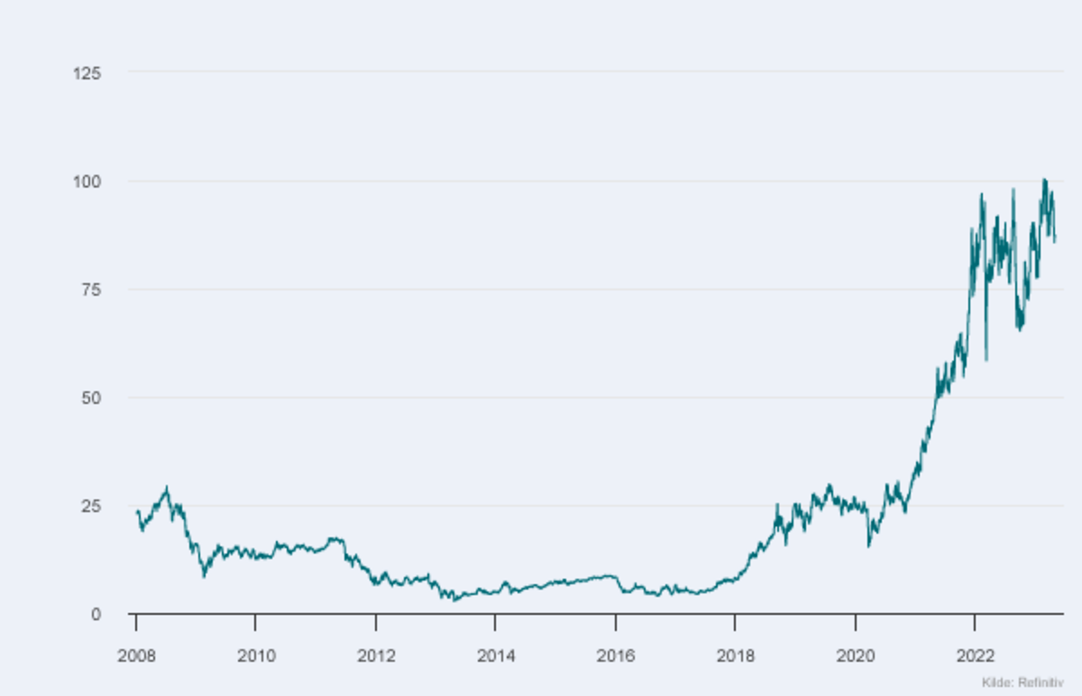Emission allowances trading

The European carbon market has grown substantially since its start in 2005. With the extension of the EU ETS to include the shipping sector, and an annual reduction of more than 4% of the overall number of emission allowances in the market, the price is expected to rise. This means an increased need and interest amongst stakeholders to understand how trading with emission allowances is regulated.
Lesetid 5 minutter
The EU Emissions Trading Scheme (EU ETS) is the world’s biggest greenhouse gas trading programme and is a key tool of the EU policy against climate change. It is a legislative scheme by which the EU caps emissions of greenhouse gases from certain industries by requiring emitters to surrender emission allowances to offset the gases they emit. One allowance permits the emission of one tonne of carbon dioxide equivalent (CO2), and companies must surrender enough allowances to cover their emissions for the previous year. Failure to comply can result in fines.

High emitters in sectors vulnerable to carbon leakage are currently granted a certain amount of free emission allowances, however, free allowances will gradually be phased out according to the new Carbon Border Adjustment Mechanism. Mostly, allowances must be purchased in auctions arranged by the European Energy Exchange (the EEX). The EEX is a regulated exchange that facilitates trading in emission allowances, carbon offsets, and renewable energy certificates. The EEX operates the spot and futures markets for trading carbon allowances under the EU ETS.
The spot market for carbon allowances on the EEX is called the “EUA spot market” (EUA stands for European Union Allowance). On this market, companies can trade allowances for the current compliance period, which runs from 1 January to 31 December each year.
The futures market on the EEX allows companies to trade carbon allowances for future compliance periods. The contracts on the futures market are standardised and have set delivery dates. The futures contracts enable companies to hedge against future price fluctuations in the carbon market and to plan for future compliance.
Financial market rules
In order to foster confidence and ensure a safe and efficient trading environment, the European carbon market is subject to a robust regulatory regime designed along the lines of the regime applicable to the European financial markets. Since 2018, emission allowances have also been defined as financial instruments in the revised Directive on Markets in Financial Instruments (MiFID II). This means that investment services and activities related to emission allowances are subject to licensing under MiFID II. Emission allowances are also captured by the Market Abuse Regulation (MAR).
Previously, only the derivative contracts of emission allowances were considered financial instruments, thus falling within the scope of financial market rules. The current classification of all emission allowances as financial instruments, constitutes an important element in safeguarding the carbon market from market abuse and other types of market misconduct.
The regulatory framework that applies to the carbon market therefore consists of several legislative instruments and uses different tools to ensure that securities supervisors are in a position to analyse and monitor the carbon market. This includes e.g. transaction reports (including MiFIR reporting requirements and weekly and daily MiFID II positioning reporting obligations) transparency data, mechanisms to ensure orderly trading, and to prevent market abuse.
In contrast to energy markets, spot markets of emission allowances do not fall under the realm of the Regulation on Wholesale Energy Market Integrity and Transparency (REMIT). Furthermore, despite being subject to weekly and daily position reporting, derivatives on emission allowances do not fall under the definition of commodity derivatives under MiFID II and are therefore not subject to position limits and position management controls.
The EU Commission has summarised the impact of the application of financial market rules to the carbon market, to mean that:
- High integrity standards apply to all market participants, who are prohibited from engaging in manipulation through practices such as spreading false information or rumours;
- Companies with large installations regulated by the EU ETS are subject to stricter rules on inside information to prevent unfair advantages among market participants;
- Better transparency and simpler access to information (e.g. how much is traded and at what price on carbon exchanges) is available to all market participants;
- Anti-money laundering safeguards (e.g. know-your-customer checks) are extended to all segments of the carbon market.
The Auction process
The primary market for emission allowances are auctions where most market participants are able to participate (e.g. credit institutions, investment firms, commodity trading firms without licensing requirements). The main traders in the European carbon market have so far been energy companies and industrial companies that have obligations under the EU ETS. With the inclusion of shipping in the EU ETS, shipping companies (as defined in the regulation) will make a new group of traders. Financial intermediaries such as banks also trade, usually on behalf of smaller companies and emitters.
25 of the EU Member States, as well as the EEA EFTA States, issue their emission allowances through an auctioning process hosted by the German trading venue EEX. The two remaining EU Member States (Germany and Poland) issue emission allowances through a similar auctioning process also on EEX.
Entities wishing to participate in auctions have to comply with certain regulatory eligibility criteria with the aim of guaranteeing the integrity of the auction process and ensuring a fair and open access for all action participants, as set out in the Auctioning Regulation. In addition to meeting the criteria for being eligible to bid, entities participating in the auctions must open an account in the Union Registry, appoint at least one bidder’s representative and comply with the admission requirements of the auction platform.
Once an entity has been admitted by EEX, it can participate in the auctions and submit bids. The auctions take place on a daily basis according to a fixed calendar. The success of a bid will depend on the price and the amount of allowances auctioned. Article 7 of the Auctioning Regulation details how the auction clearing price is to be determined.
Licencing requirements
Entities providing investment services specialising in emission allowances would, as a rule, be required to hold a MiFID licence and comply with all MiFID organisational and operational requirements (including know-your customer checks, organisational requirements, transaction reporting, record keeping and investor protection rules).
Entities with compliance obligations under EU ETS (compliance buyers) that are only buying and/or selling emission allowances on their own account for hedging purposes are as a main rule exempted from authorisation and prudential duties under the MiFID regulation. The licensing exemption does not apply to trading on own account which also implies carrying out trading for third party clients, market making activities, high frequency trading or non-ancillary investment services. Specific advice should be sought prior to engaging in emissions allowance trading.



